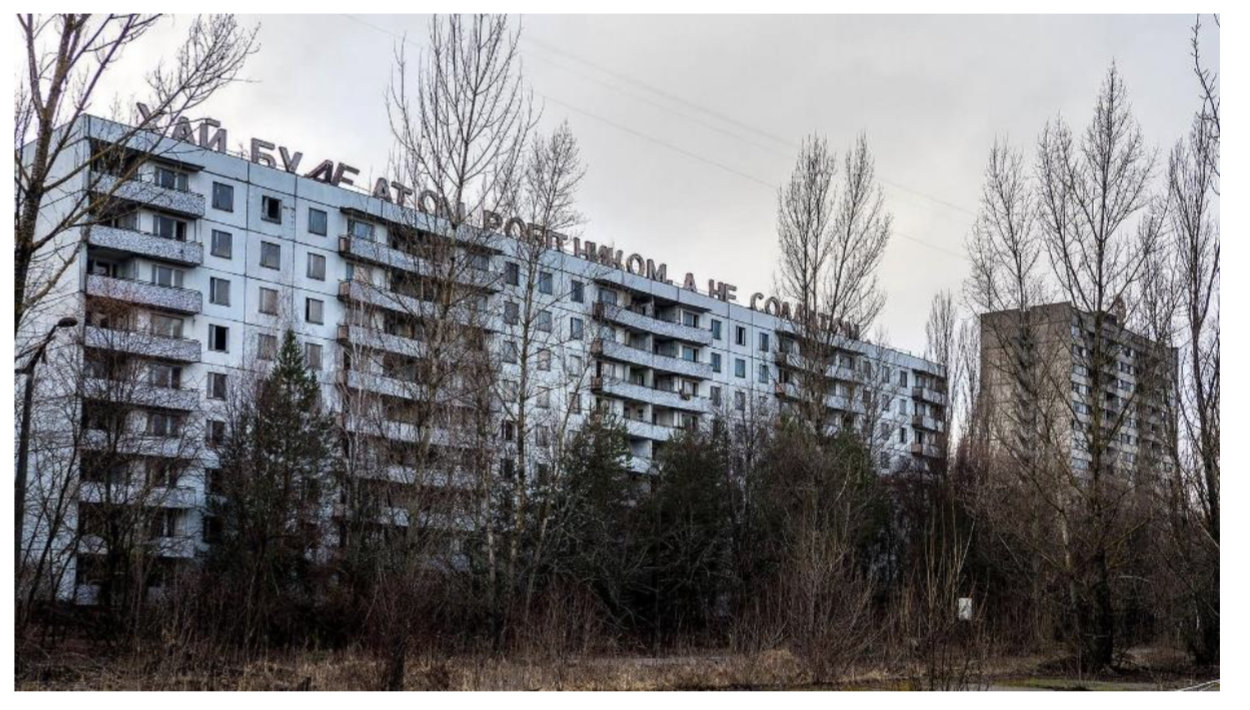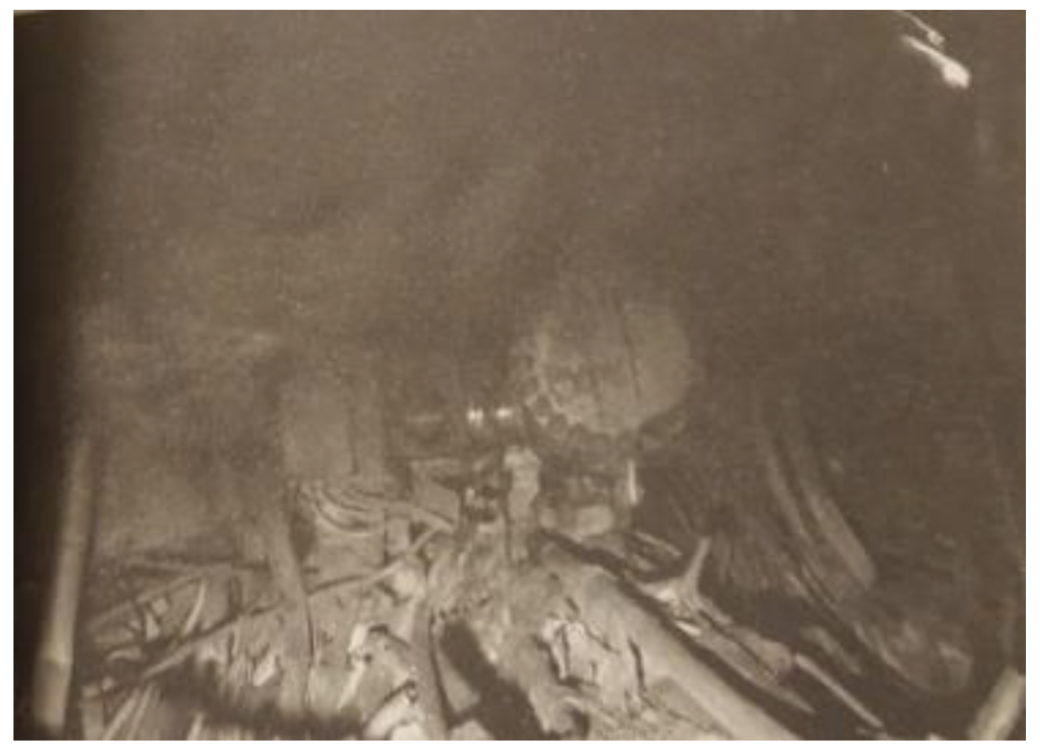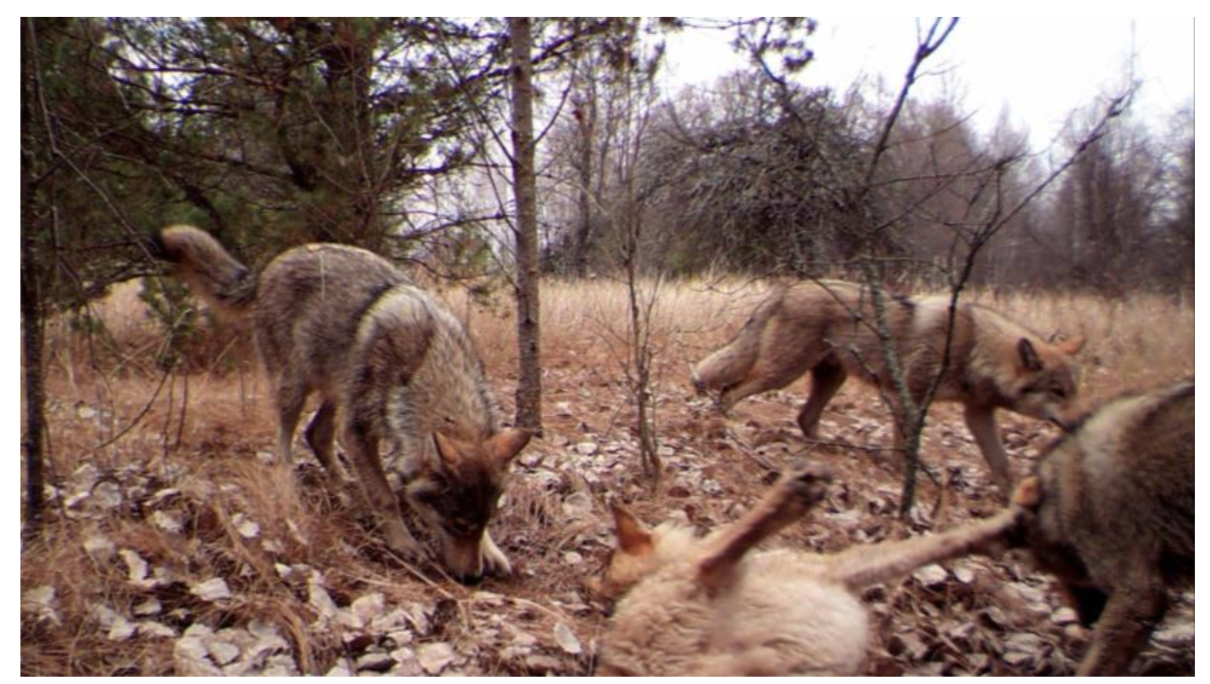By April Wendling
Why research Chernobyl? Essentially, studying what happened at the Chernobyl power plant and how we make meaning of it is simply a method of studying how we make meaning of the Anthropocene as a whole. The Anthropocene refers to our current geologic epoch, marked by human-caused environmental effects, such as climate change and the contamination of landscapes by radioactive isotopes. Chernobyl is but one example of humans shaping our environment, and the various nuances of the ways we reflect on this disaster are strikingly akin to how we reflect on other facets of anthropogenic change.Just like other aspects of the Anthropocene, to paint a clear picture of the Chernobyl disaster, we must understand how people have reflected on it in different ways, unfolding different “dimensions” of the disaster, so to speak. So let’s talk about what nuclear energy means to people. Through much of the middle of the 20th century, nuclear energy enchanted the public eye. How incredible, that fuel the size of a coin could sustain an entire power station. It was cutting edge, it was romantic, it was the future.
This image is of a building in Pripyat, the town closest to the Chernobyl power plant. When this town was founded in the 70’s to house Chernobyl’s workers, the idea of the “peaceful atom” was popular, and it shows even in the architecture–the text atop the building reads, “Let the atom be a worker, not a soldier.”It was a push for nuclear technology to be used as an alternative energy source, rather than to make nuclear warheads. Of course, generations who grew up during and after the 1986 disaster tend to see the atom in a different light.
It makes sense then that Chernobyl has different meanings to different people. In “A Stroll to the Zone,” Markiyan Kamysh, a stalker –someone who illegally visits the Exclusion Zone –reflects on this.

“What is the Chernobyl Zone today? For someone, it’s a horrible memory of half-forgotten childhood, of happy Soviet youth days, when in a few days your life is shattered into small pieces, and yourself, and all your neighbors, flee into the world to find new homes on evacuation buses. For some, the Chernobyl Zone is radioactive shit that was cleared out in May of eighty-six. For some, it’s Terra Incognita, filled with myths aboutzombies and soldiers riding in dark green APCs. For some, it’s official excursions, when greedy businessmen with loud speeches make money on preoccupied tourists.”
These various meanings ripple into the way that we create narratives about Chernobyl.One such narrative is the declensionist approach. This is what people typically think of when you bring up anthropocentric media. Alarmist headlines proclaiming that “CLIMATE CHANGE WILL DISPLACE HUNDREDS OF MILLIONS”, which, to many of us, have lost their meaning in a world where we’ve become jaded to these proclamations of disaster. It may still catch the interest of many readers if the subject matter is enticing enough, however.
In a delensionist narrative, such as Kate Brown’s Manual for Survival: A Chernobyl Guide to the Future, the Chernobyl disaster is simply another of many stepping stones in humanity’s destruction of ourselves and our environment.
“Whoever said Soviet leaders were not capitalists was wrong. Like business leaders elsewhere, they emphasized production over safety. Rather than securing the disaster site and closing it to let the most powerful radioactive isotopes decay for several years, they fast-tracked a plan to return the Chernobyl plant to full production as soon as possible.”
Even after the disaster, the other reactors at the Chernobyl plant were still operated as normal until 2000.Brown goes on to cite that there were numerous accidents at the Chernobyl power plant before the 1986 disaster, and afterwards as well. Likewise, nuclear missiles had been tested in secret in the marshlands around the power plant.
“Instead of an accident, Chernobyl might be better conceived of as an acceleration on a time line of destruction or as an exclamation point in a chain of toxic exposures that restructured the landscape, bodies, and politics.”
Since this story has come to light, people have asked why he went down there. Some suggested that perhaps it was the same motivation that drives people to climb Mt Everest, though Kupny disagrees. He explains, “I don’t do it to put a flag down and beat my chest. I went under to figure out what happened. I see nuclear energy as a natural force. I want to understand this force; the immense power behind the accident.Unless you go there, you can’t understand it.
All of his photos have small white specks populating the image. These points of light are none other than the image of radiation itself imprinting on the film. This photo in particular shows bright sparks of radiation in the upper right.
Kupny went inside 10 times, and his experiences have given him a poetic outlook on reactor No 4. “To me the reactor is almost like a living thing, like a beast that is sleeping,” he’s said.
The irony of this narrative lies in our ability to find beauty even in the ruins of disaster, even in the self-portraits of decaying radioactive isotopes.

Finally, another option for discussing disasters of the Anthropocene is to simply do away with the polish. Raw, personal accounts of events like the Chernobyl disaster have the power to instill heartbreak in the reader whist employing little rhetorical flair. While declensionist stories run the risk of being ineffectual to the jaded reader, the undeniably human feeling of seeing into another person’s experience is hard to shrug off as a reader. When engaging with this sort of material, you don’t feel like you’re being rhetorically manipulated into being heartbroken, you just are.
In her book, Voices fromChernobyl, Svetlana Alexievich writes simply and directly, without any tricks, and the emotion she distills is heartbreaking. These words are not her own, but those of survivors of the 1986 disaster. Open to any page, and you find yourself drawn into these people's lives: townspeople who go out on their balconies to watch the unusual colors of the reactor fire, farmers forced to leave their crops and cattle, soldiers and firemen drafted in with inadequate protection to clean up the mess the reactor left. The stories she shares straddle the line between strikingly human and unbearably distressing. The very first monologue she shares is from a woman whose husband was at the reactor when the accident happened. She recounts the slow and agonizing process of hisdeath.
“There’s a fragment of some conversation, I’m remembering it. Someone is saying: ‘You have to understand: this is not your husband anymore, not a beloved person, but a radioactive object with a strong density of poisoning. You’re not suicidal. Get ahold of yourself.’ And I’m like someone who’s lost her mind: ‘But I love him! I love him!’ He’s sleeping, and I’m whispering: ‘I love you!’ Walking in the hospital courtyard, ‘I love you.’ Carrying his sanitary tray, ‘I love you.’”
In another monologue, a woman recalls the immediate chaos before towns near the reactor were evacuated.
“There was a Ukrainian woman at the market selling big red apples. ‘Come get your apples! Chernobyl apples!’ Someone told her not to advertise that, no one will buy them. ‘Don’t worry!’ she says. ‘They buy them anyway. Some need them for their mother-in-law, some for their boss.’”
The list goes on. Returning home from helping clean up the exclusion zone, one soldier burns all his clothing except for his army cap, which is coveted by his little boy. Two years later, his child is dead of a brain tumor. When forced to evacuate her hometown, one woman smuggles out her radioactive cat in a suitcase.
There is very little in the way of organization of these recollections. Alexievich simply presents them as they are. It feels less like reading a cohesive story and more like observing the raw materials of which a story might be made from, as if they could be expertly arranged into a shape that has some meaning. Yet, doing so would betray Alexievich’s purpose of simply sharing these people’s experiences unfiltered.
Alongside my humanistic work this year, I’ve also been studying wildlife reclamation in the exclusion zone. I was first drawn to this topic by its sheer irony –how can fauna populations be booming in such a heavily irradiated landscape? As I’ve come to discover, it’s easier for wildlife to cope with living in the shadow of a nuclear disaster than living alongside humans.
Let’s go back in time for a moment, before the idea of the Chernobyl power plant was even conceived. An all-out assault on the natural landscape in the 1920’s demolished much of the area’s biodiversity. In a massive national effort, complete with obligatory heroic propaganda, the Pripyat marshes were drained and deforested. Thousands of miles of canals were built, and tens of thousands of people arrived to work on the new collective farms. This so-called “land improvement” took place with a single goal in mind –to turn the area into the Soviet Union’s breadbasket. Even today, the land just outside of the Exclusion Zone looks the same as it did 90 years ago –wheat fields and drainage canals stretch as far as the eye can see.
Just beyond the gates that isolate the Zone from the outside world, it’s a completely different story. Forests and fields have been flooded, thanks to the return of beavers. Thousands of them have been hard at work, damming up man-made canals and restoring the marshes, toppling trees as seen here. With the landscape’s return to its marshy roots, many amphibians, fish, shellfish, insects, otters, moose, and waterfowl have all returned as well. The Pripyat marshes were once so incredibly vast, they stopped the army of Genghis Khan. Although agriculture cleared them out, the swamps are now back, thanks to the largest rodent in Europe and a nuclear reactor.

Pictured here are wolves at an experimental scent station within the exclusion zone. For many years, people have spotted them roaming about the zone, but were unsure if they were actually surviving in the irradiated landscape. Some believed that the zone’s wolves were simply wolves from outside the zone who migrated into the zone and promptly died there.Recent studies are suggesting otherwise. Many wolves are born in the zone and spend their normal-length lives there.
The Przewalski's horse nearly went extinct, but in an effort to save the species, it was introduced into the exclusion zone in 1998.There are about 60 of them now, though their population could be upwards of 200 if poachingwasn’t an issue.
All in all, this narrative highlights the truly “patchy” nature of the Chernobyl disaster, and, by extension, the Anthropocene as a whole. There’s a lot of damage that’s been done here, and it’s important to recognize that, but it’s also worth taking note of the “patches” of positive outcomes, unexpected as they may seem.
In February 2019, it was revealed that discussion about redrawing the Exclusion Zone’s boundaries is underway in Narodychi, a town near the edge of the zone. Three decades of research have concluded that much of the outer Zone is safe for food growth, land development, and permanent residency. If the exclusion zone’s boundaries are redrawn, however, what will become of the plants and animals that live there? It’s hard to say.
These approaches to storytelling and meaning-making are not unique to the Chernobyl disaster. They span all anthropocentric topics and pervade popular media. When we talk climate change, how do we spin our tales? Do we point to the destructive effects of capitalism and mourn the damage that’s consistently being done? Do we find peace in knowing that life on earth will go on without us, that in the ruins of humanity, there are still “patches” where mother nature endures? Or perhaps we avoid “spinning” our stories altogether, and find meaning by giving voice to the unfiltered experiences of those worst affected by climate change?
Each of these dimensions bring something new to the table, a fresh perspective, a different voice. To assume that any one approach to anthropocentric narrative holds more truth than the others is to flatten the issue at hand and ignore the complexities that supplemental approaches may add.
None of these methods are “correct”, nor are they mutually exclusive. With all its dimensions, intersectionality, and nuances, the Anthropocene is truly what we make of it.
References
Alexievich, Svetlana. Voices from Chernobyl: The Oral History of a Nuclear Disaster. Picador, 2005. Print.
Brown, Kate. Manual for Survival: A Chernobyl Guide to the Future. W.W. Norton & Company, 2019. Print.
Kamysh, Markiyan. A Stroll to the Zone. Nora-Print, 2015. Print.
Tsing, Anna, Heather Swanson, Elaine Gan, Nils Bubandt. Arts of Living on a Damaged Planet: Ghosts and Monsters of the Anthropocene. University of Minnesota Press, 2017. Print.
check out other Flatland contributions below









